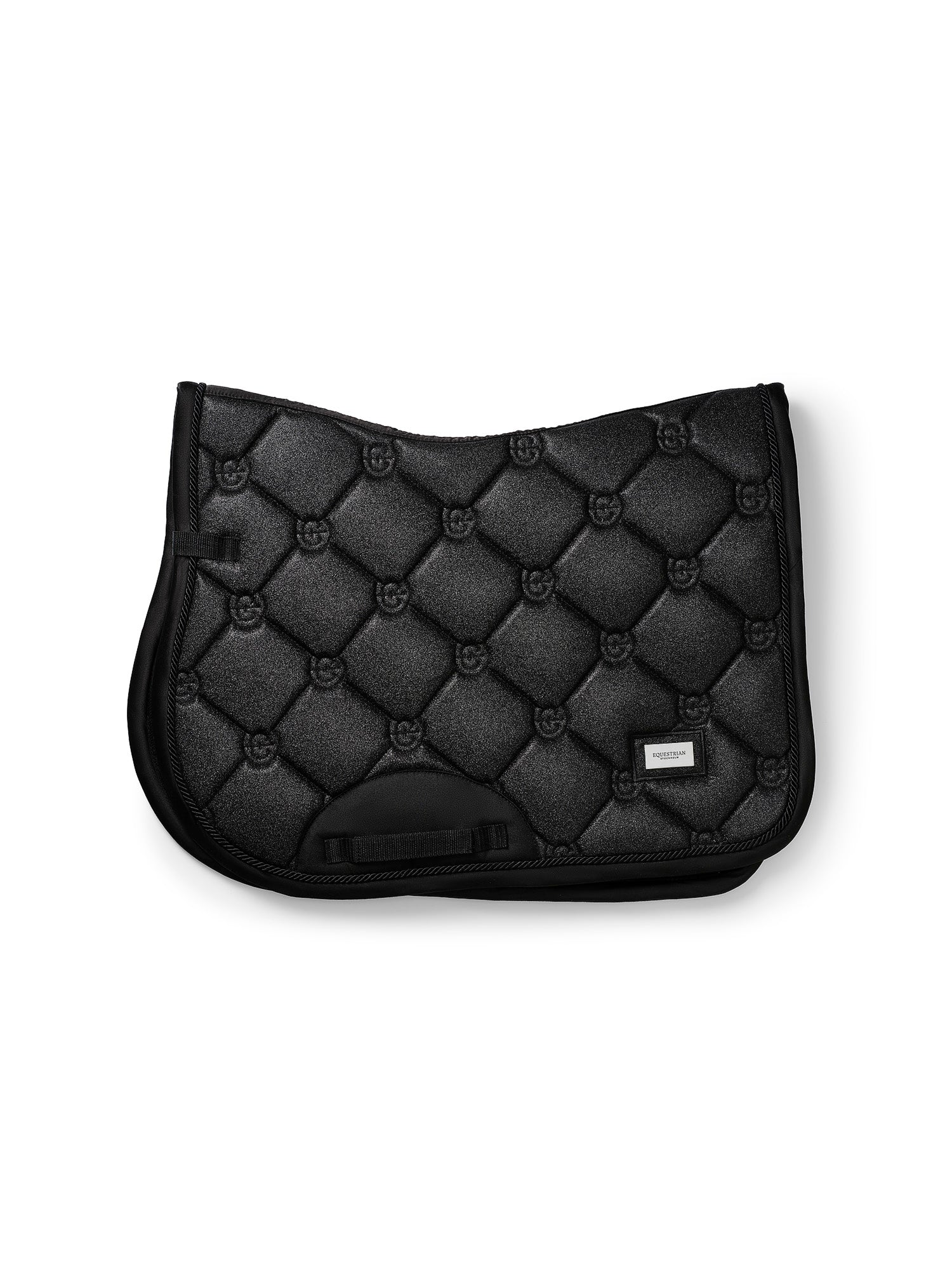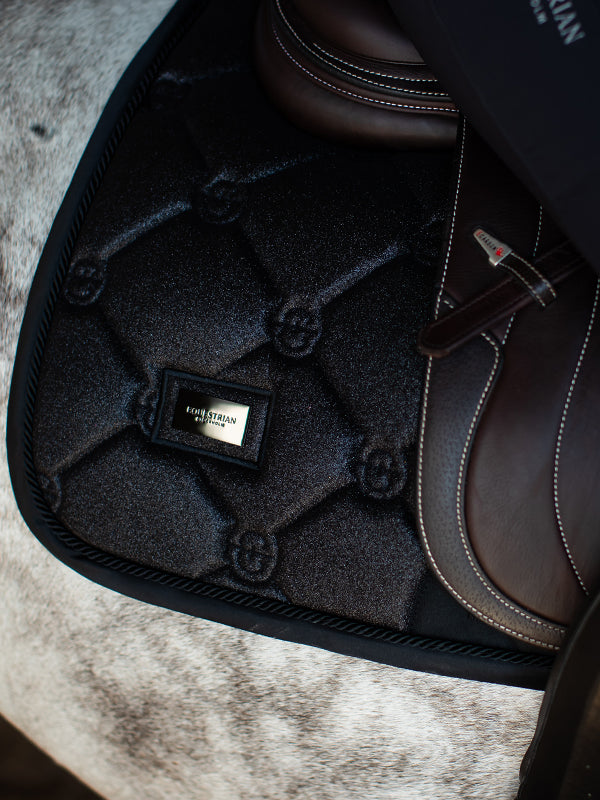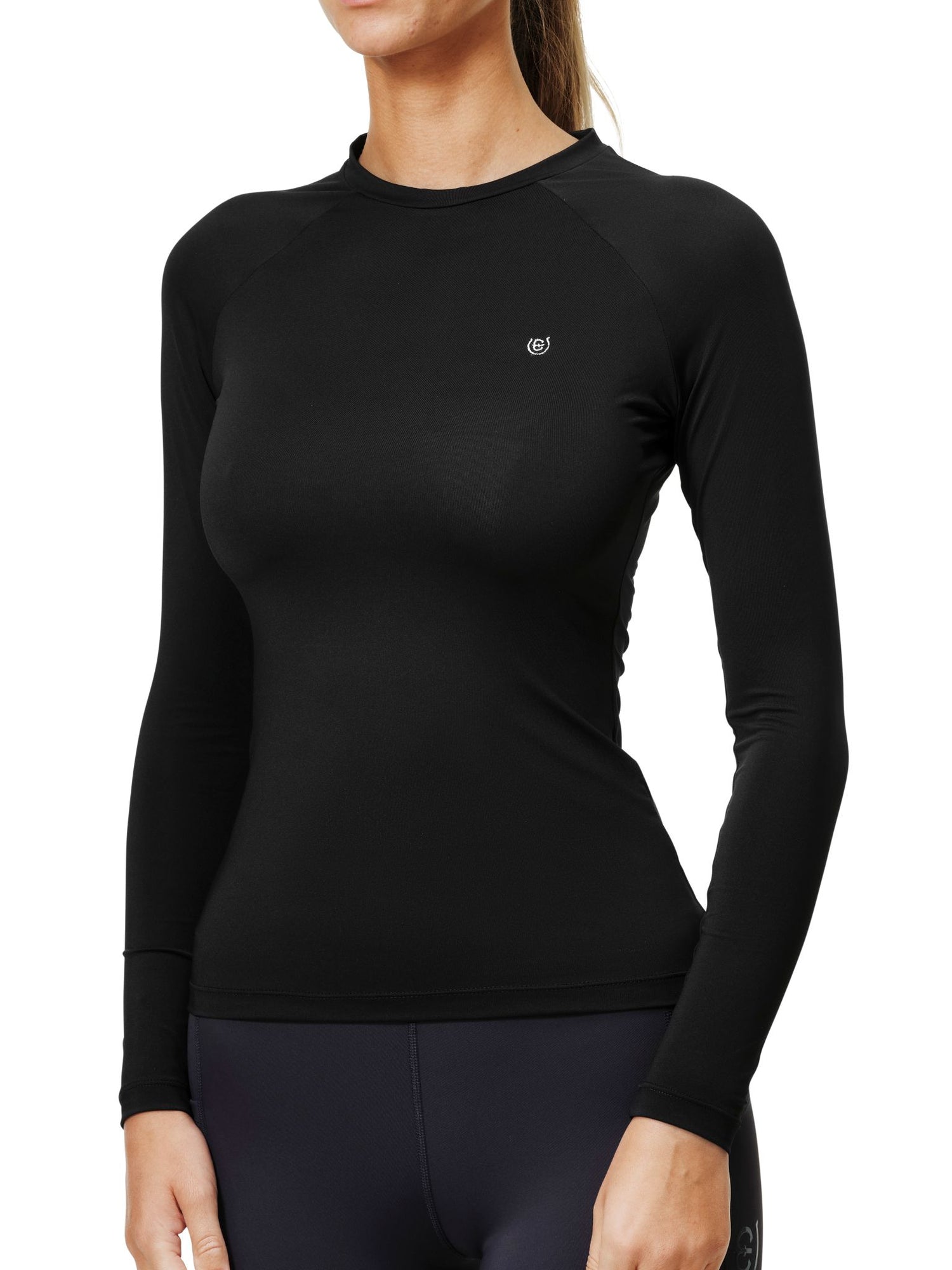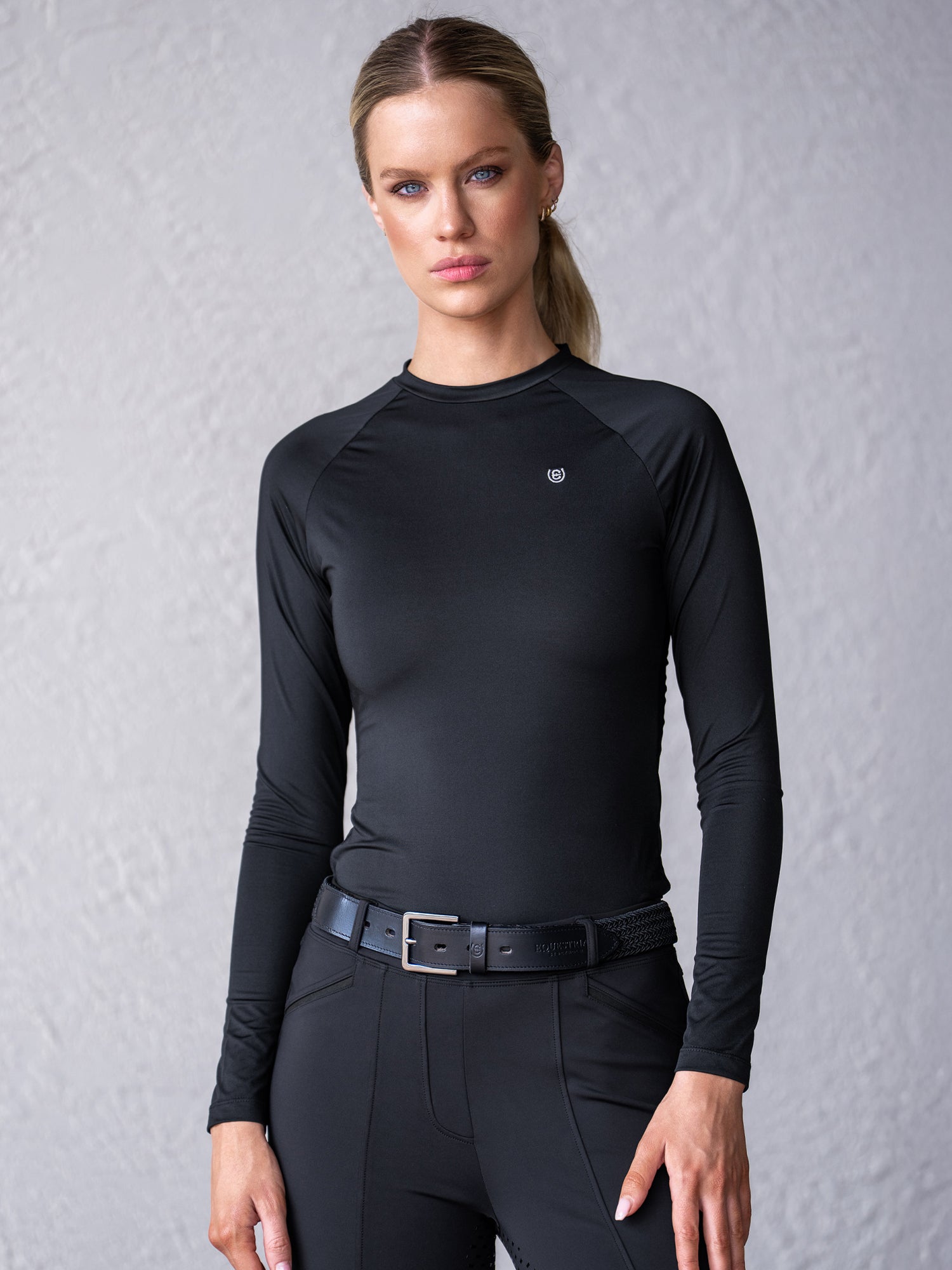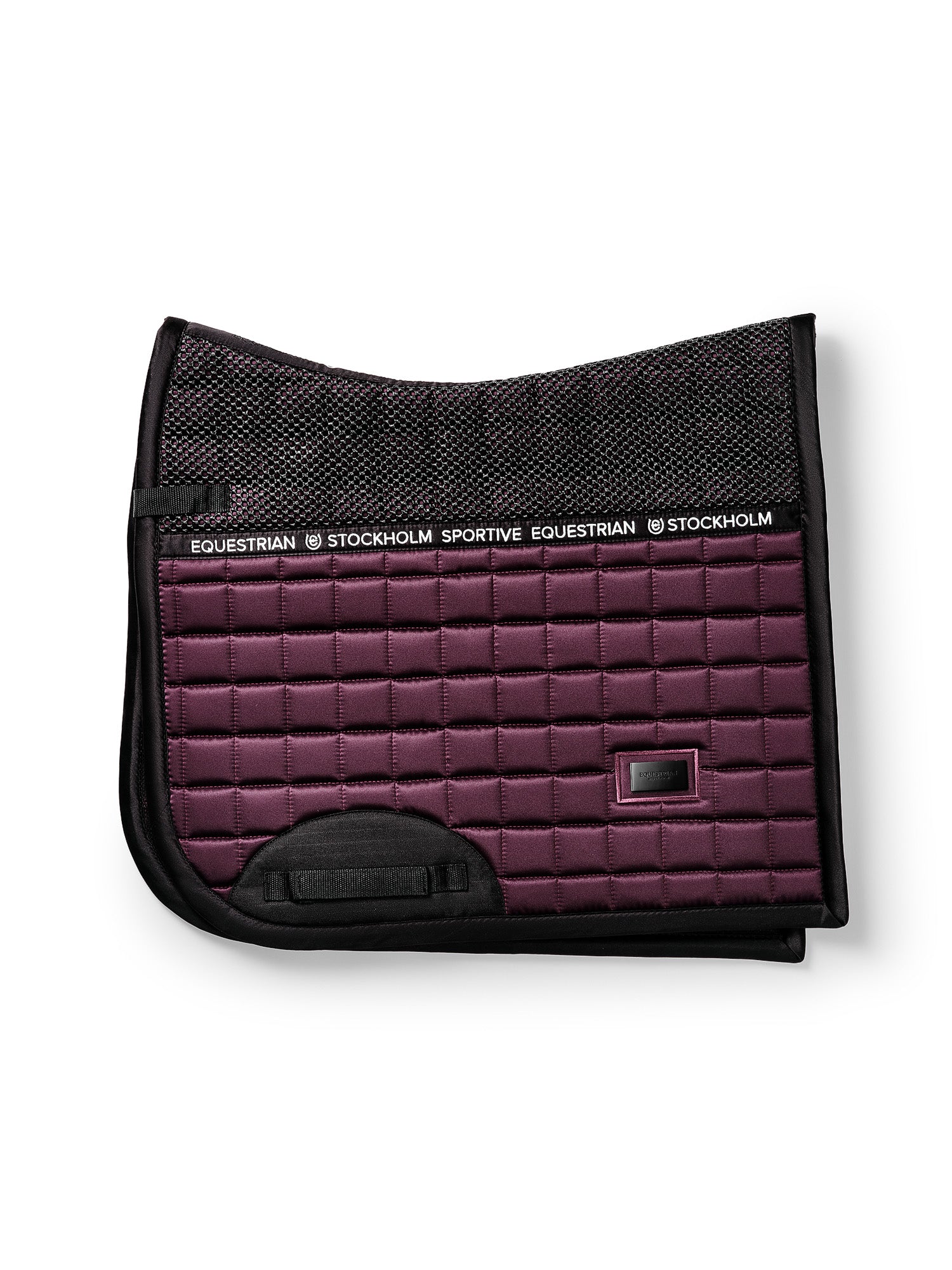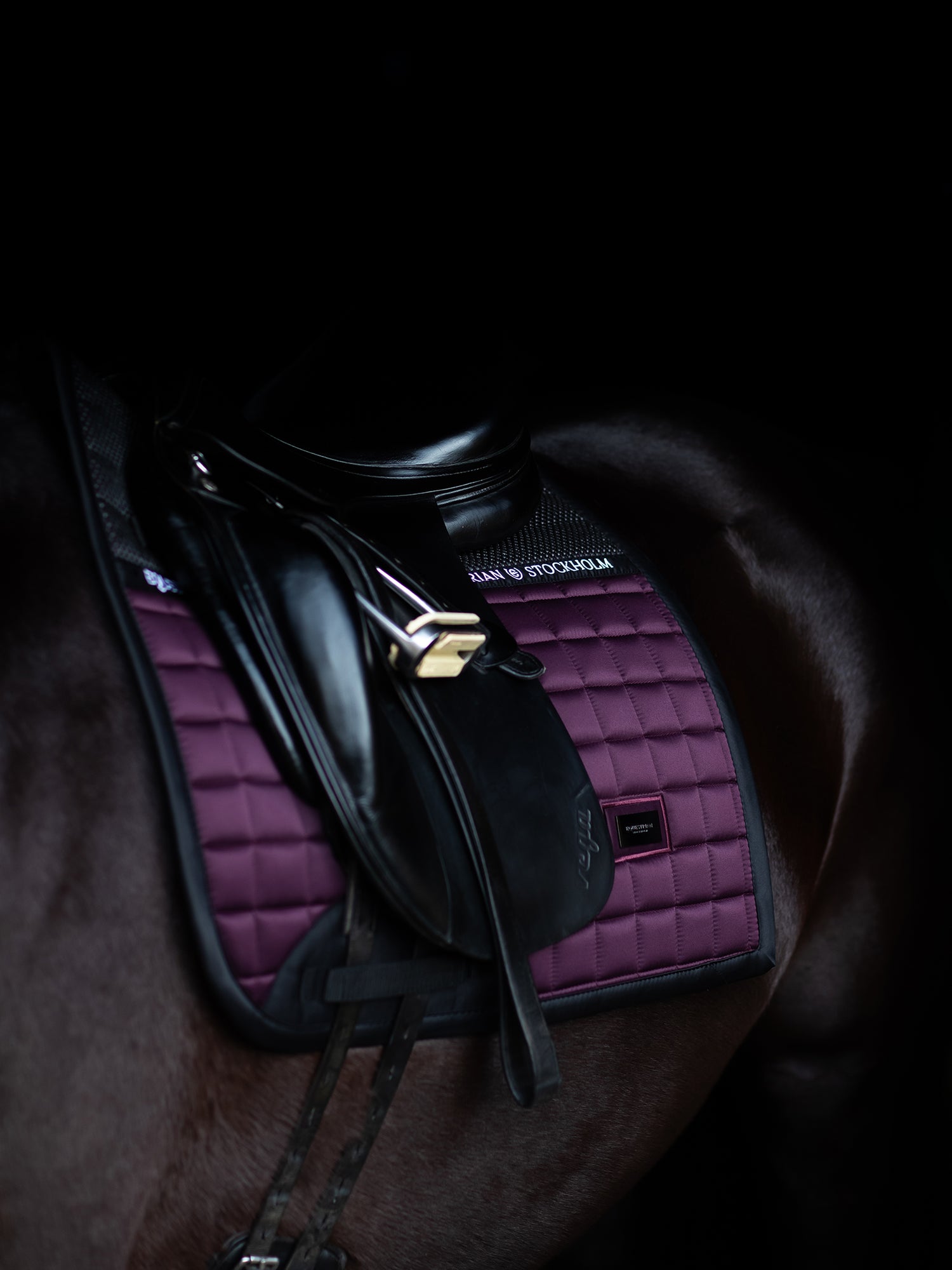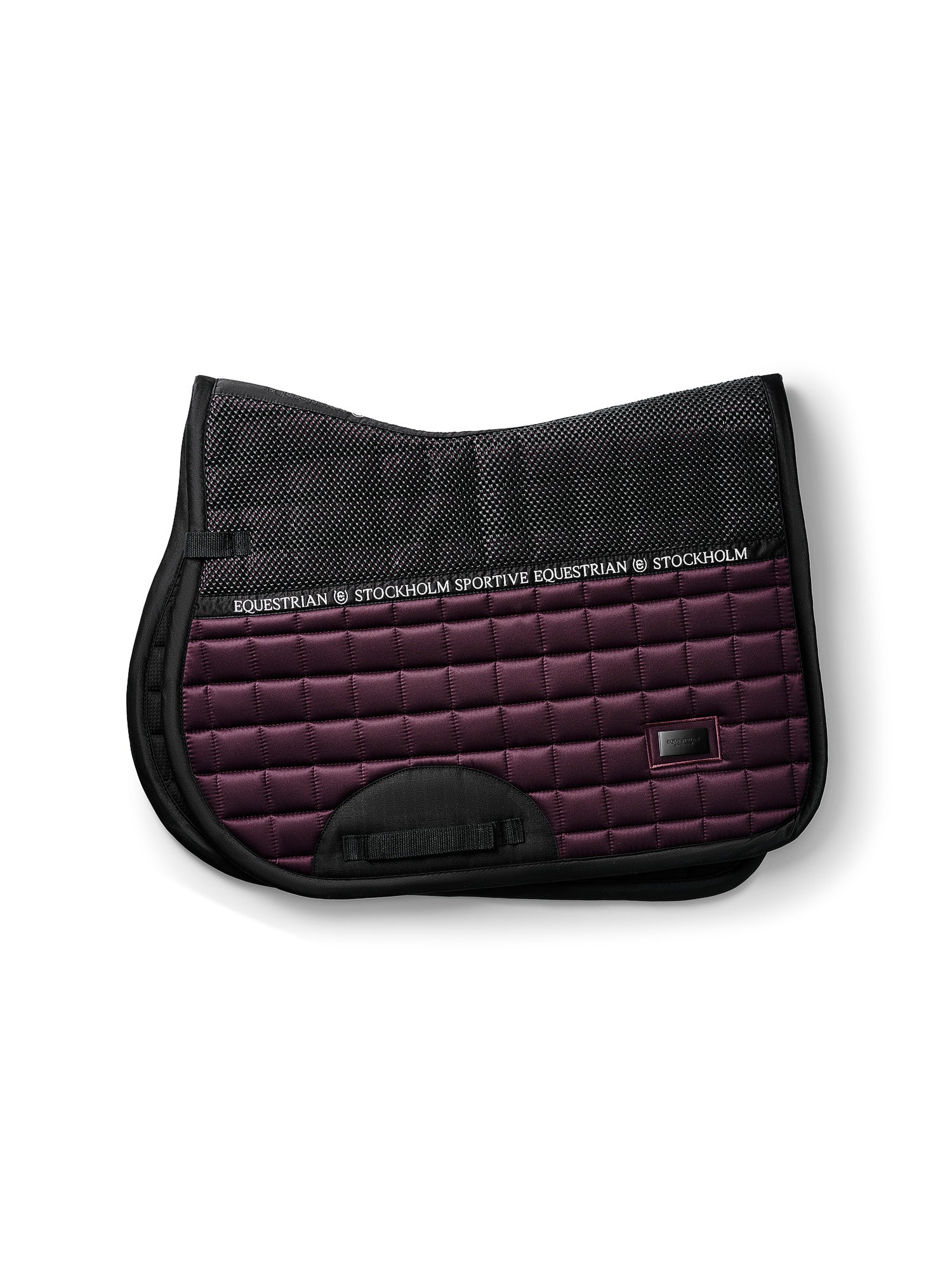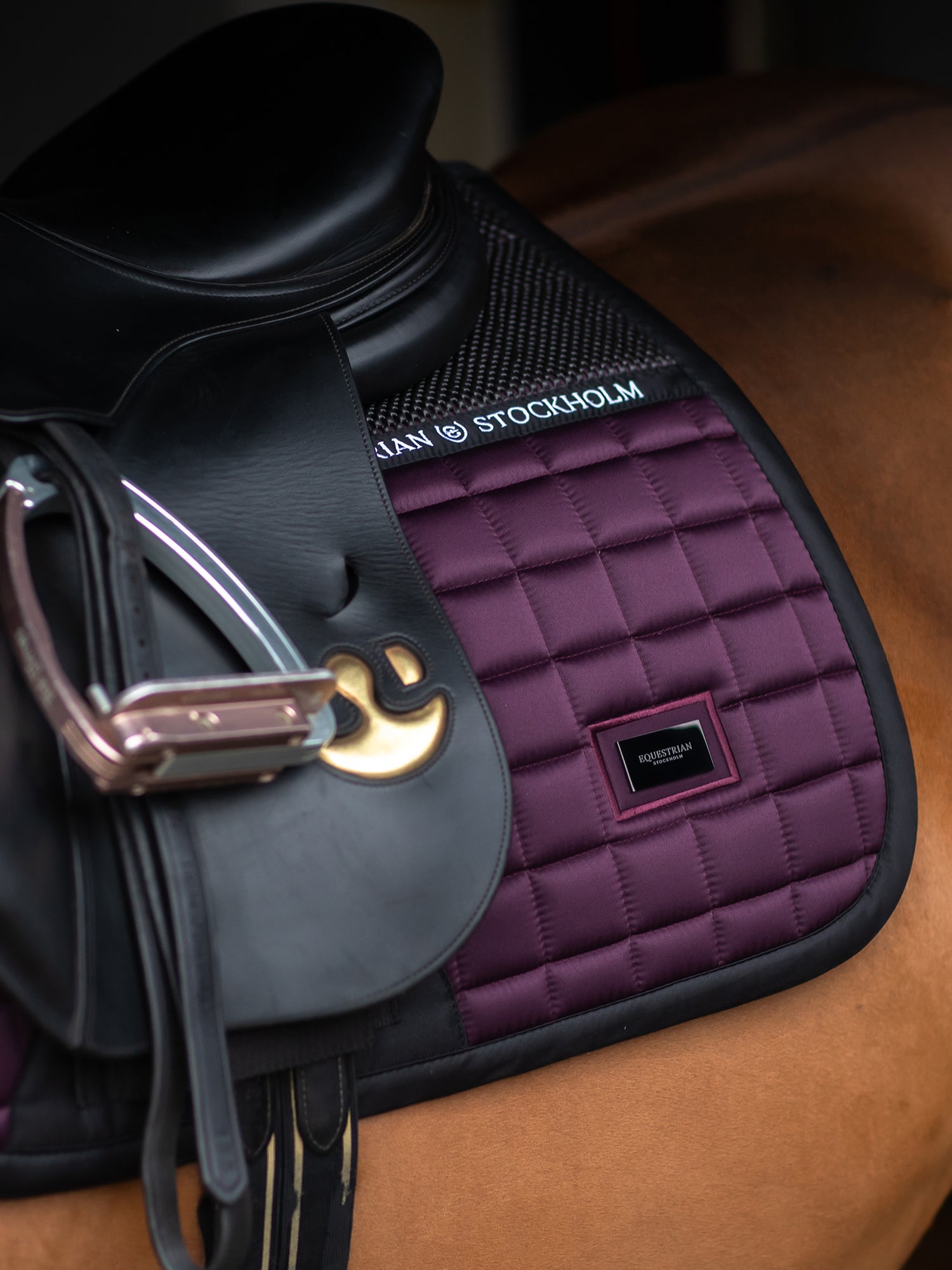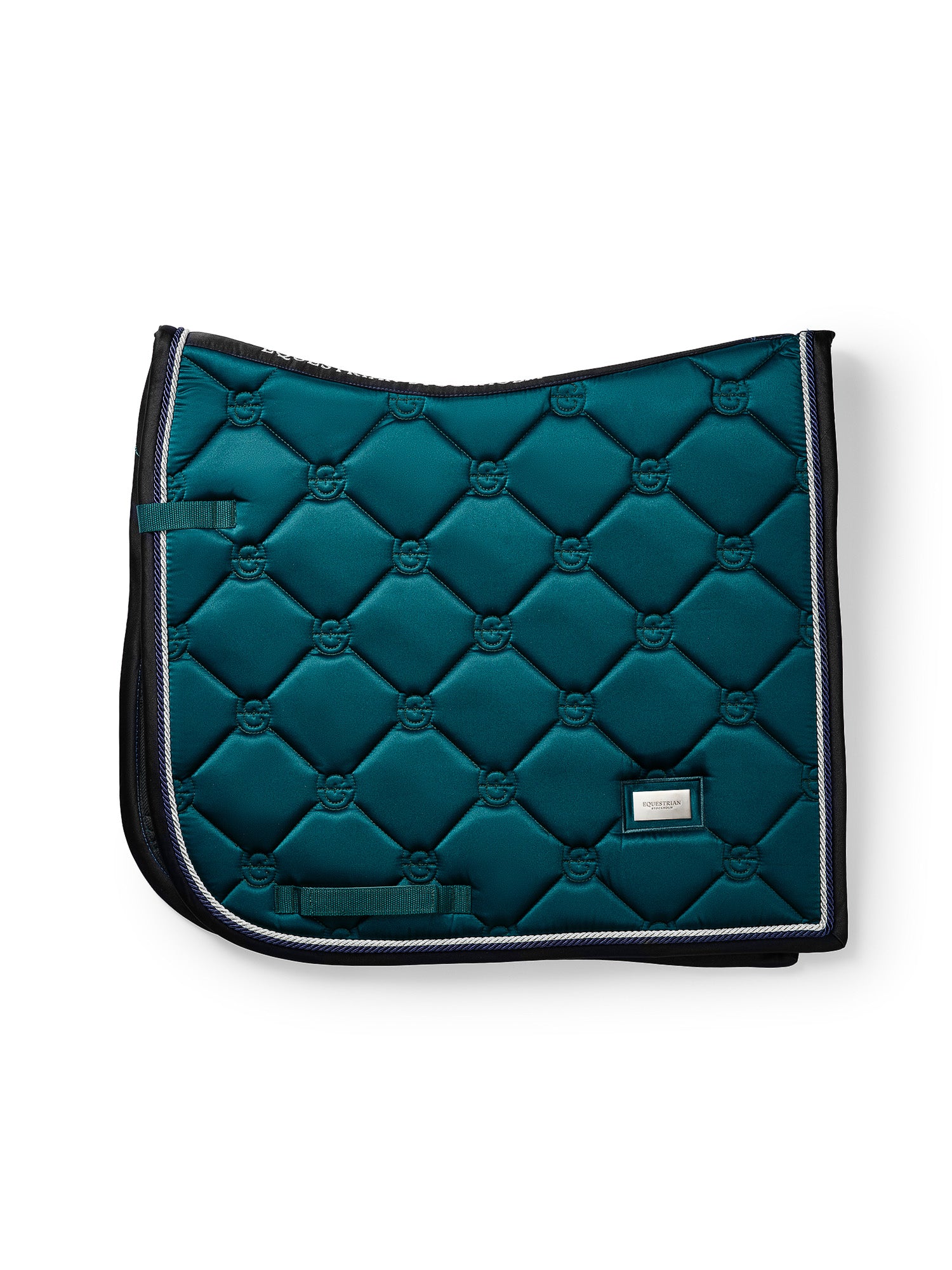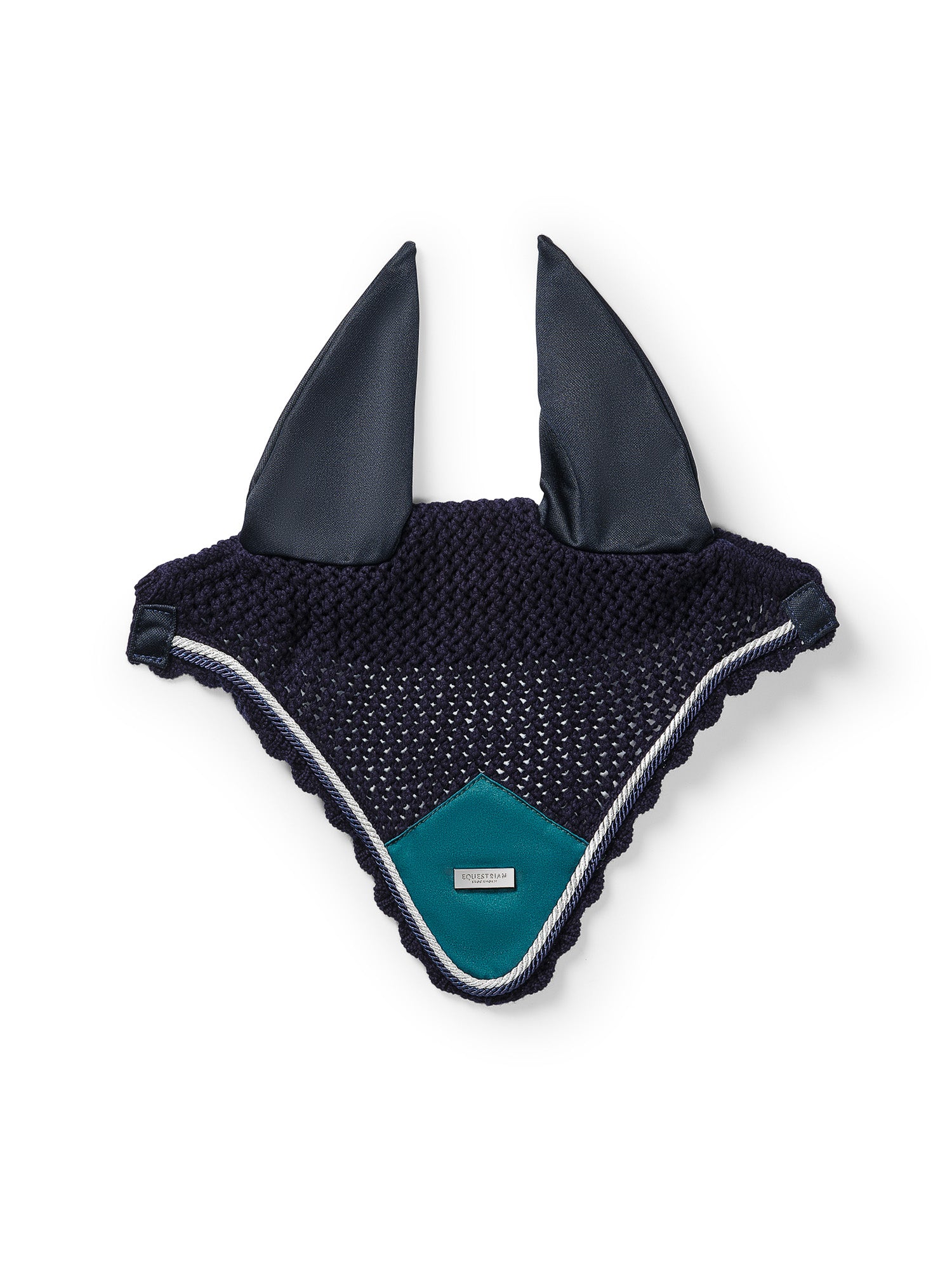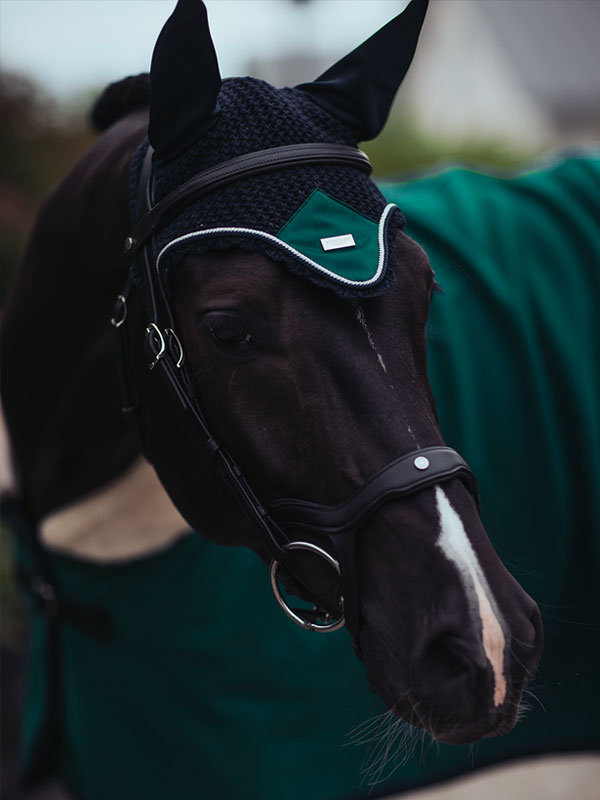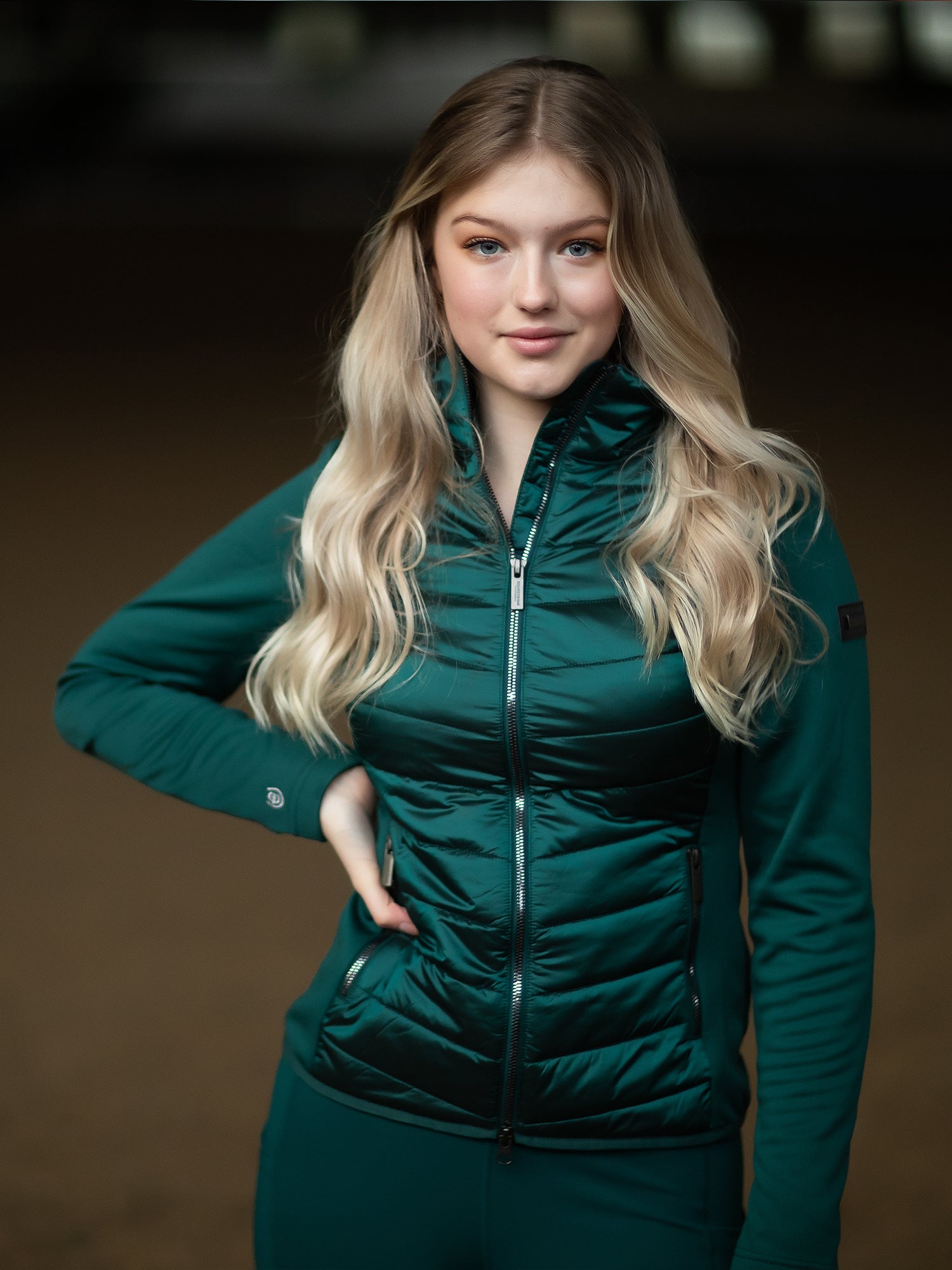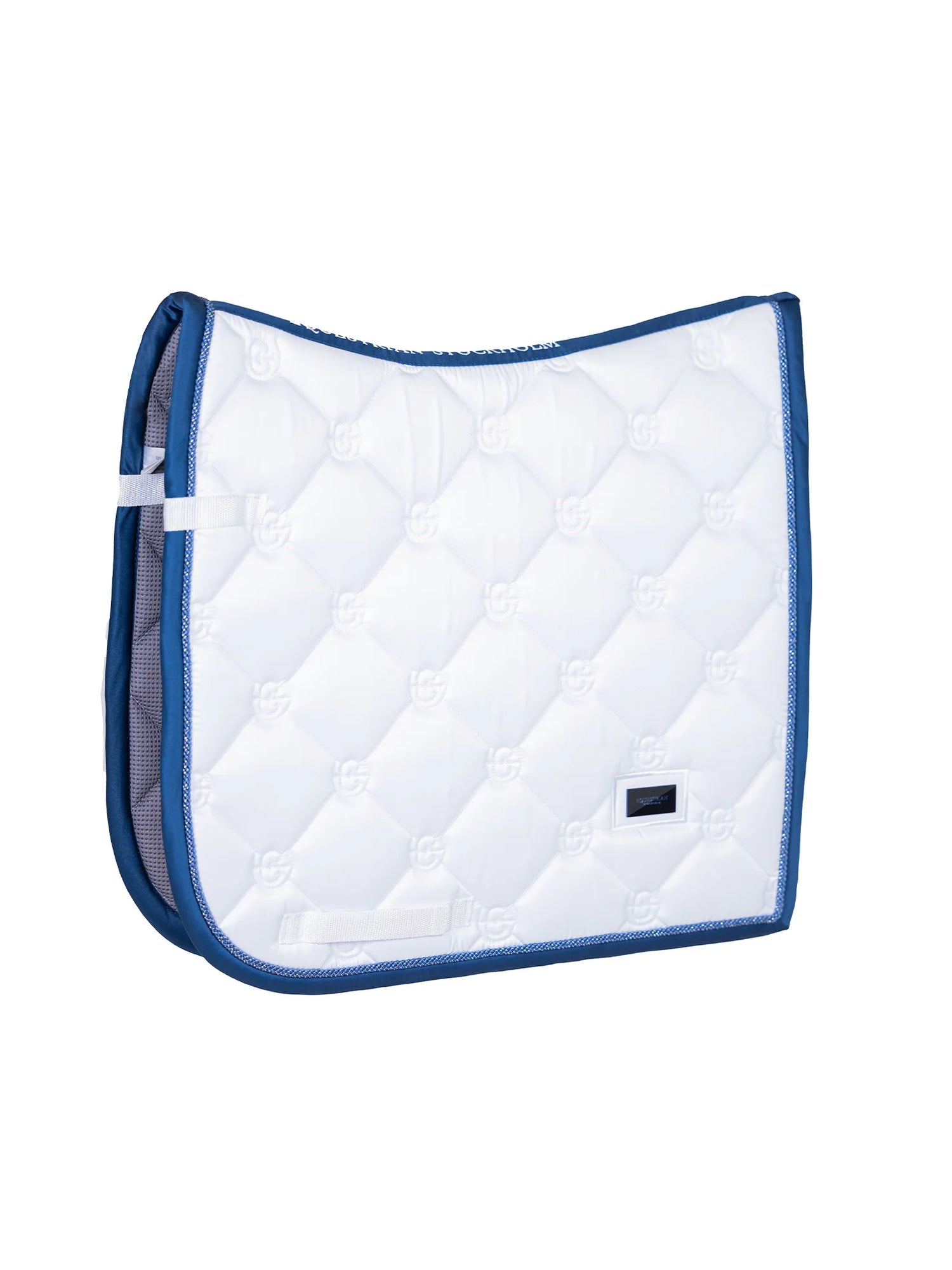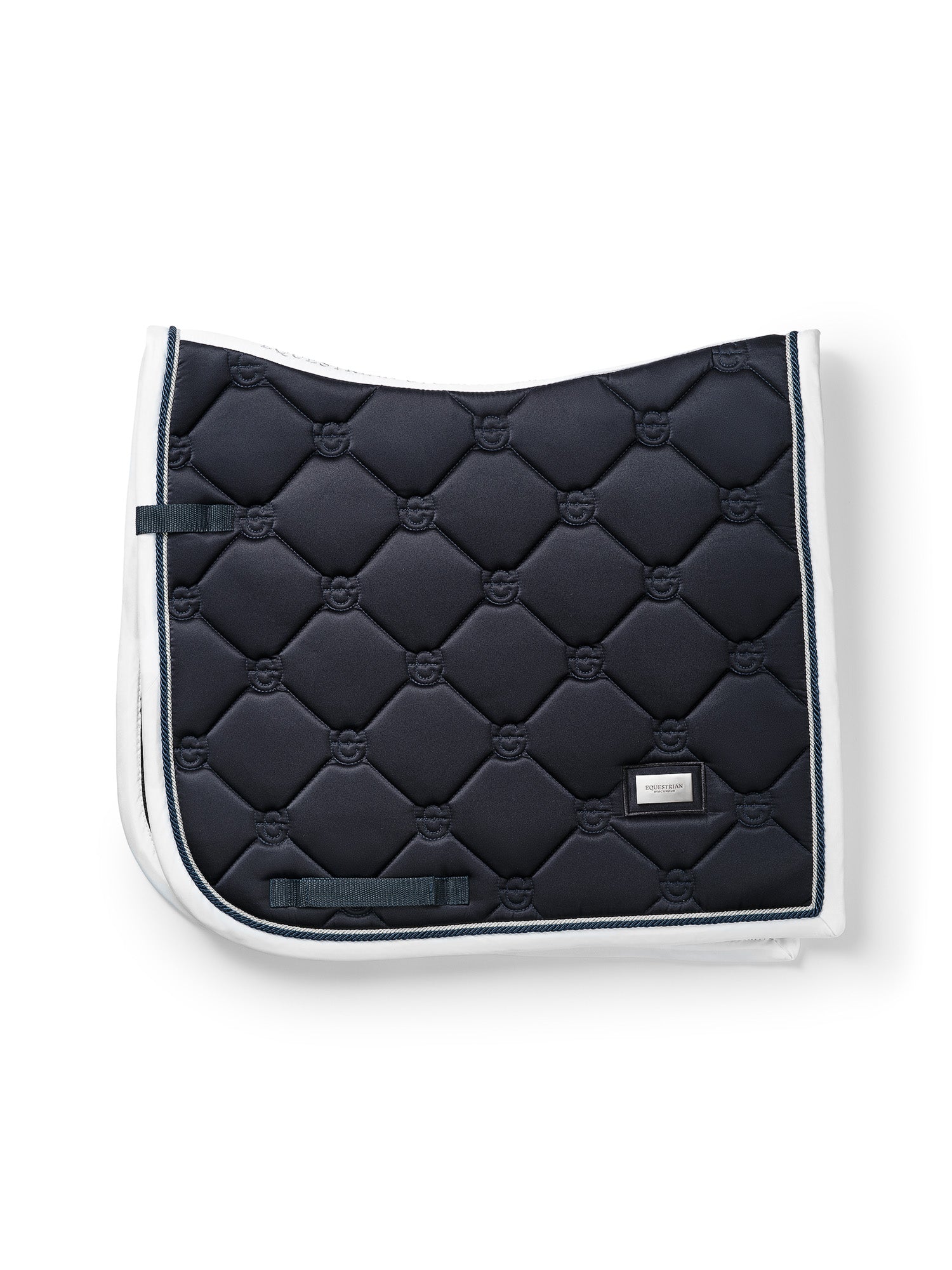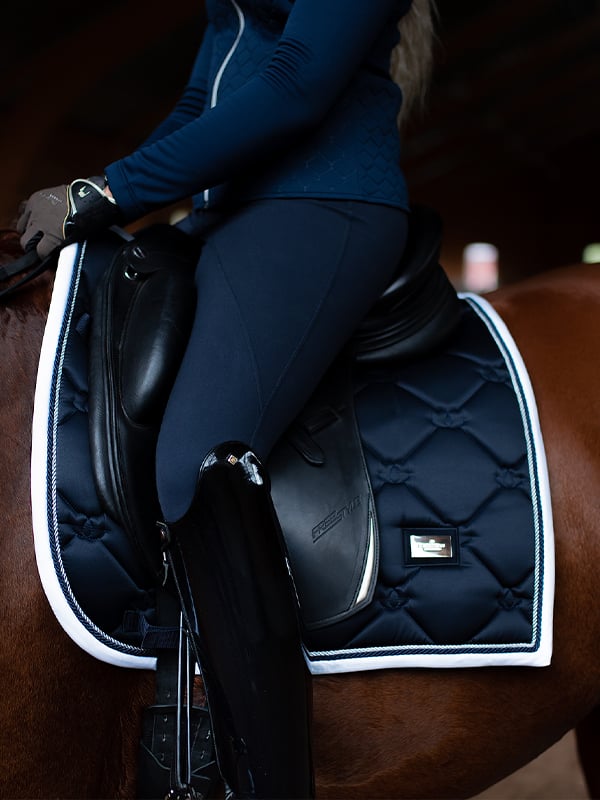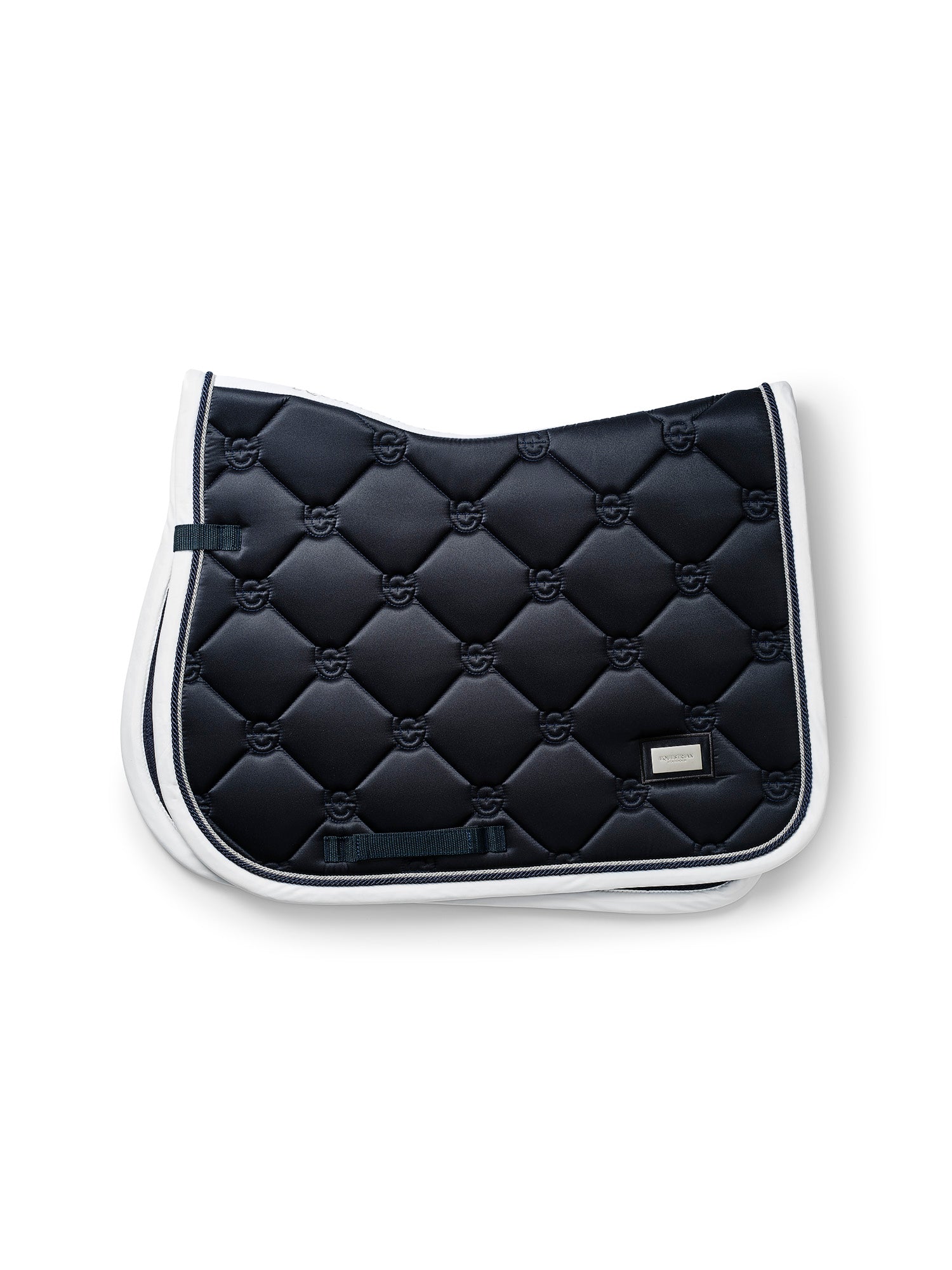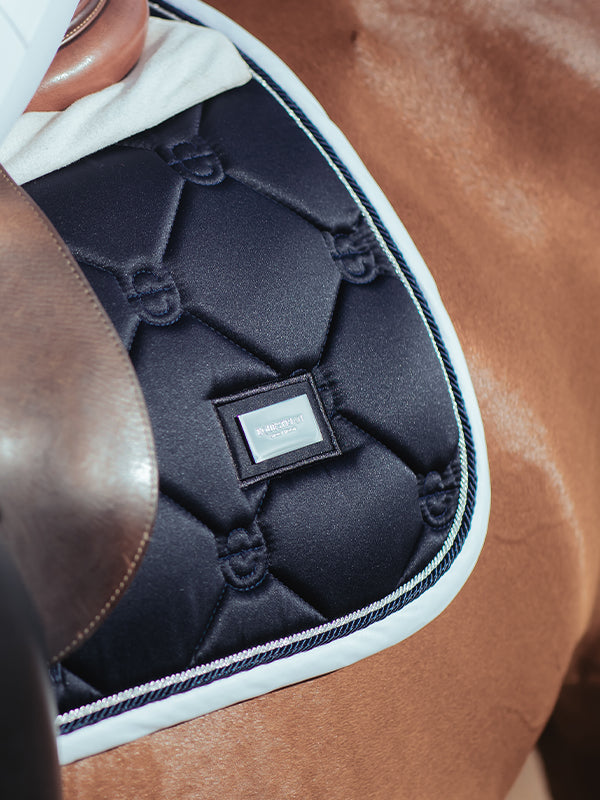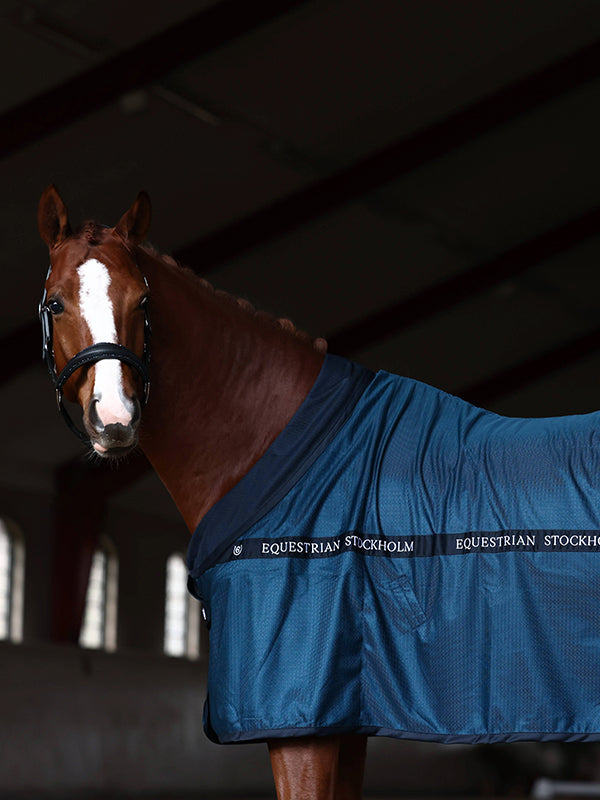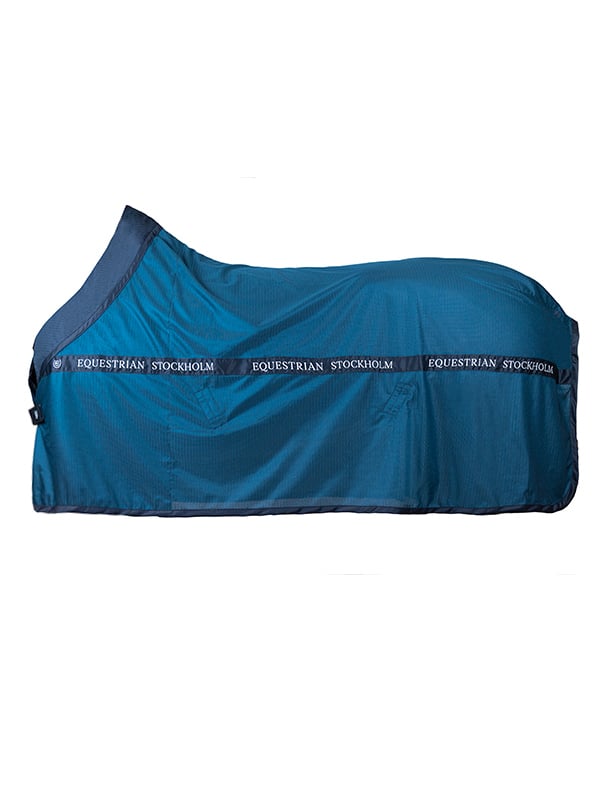A horse blanket covers the horse’s chest, back, flank, root of the tail and backside. Some blankets also have extended neck protection to warm the horse's neck. Horse blankets can be made out of different materials such as fleece, wool and warmer lined down blankets.
Horse Blanket Aurora Blues
The Importance of Horse Blankets for Seasonal Protection
Horse blankets are primarily used to provide the horse with protection against rain, colder temperatures, and wind that can occur during all four seasons and thus functions as a jacket for the horse in many ways. It is common to use blankets on a groomed horse and thus add an extra layer of fabric. Equestrian Stockholm offers an assortment of exclusive horse blankets in different colors, click here for all horse blankets.
What kinds of horse blankets are there and when should they be used?
The choice of horse blanket is dependent on weather and temperature and there are many different blankets to match the different needs of the horse. The most common blankets are outdoor blankets, which include everything from light to heavy turnout blankets and rain sheets. These types of blankets are very common for when horses are turned out in the pasture. Some blankets, such as stable blankets or cooler sheets/fleece blankets, are also popular to use for purely aesthetic reasons, such as when you lead your horse to the racetrack, or simply to match halters, leg guards, leg wraps or other equipment.

The most common horse blankets are:
Stable blanket
- Usage: Primarily used indoors in the stable; one of the most common horse blankets.
- Purpose: Provides extra warmth when the horse is in its stable; can also be used during transport.
- Thickness Options: Available in different levels of thickness; selection depends on: Whether the horse is clipped. The amount of extra warmth needed.
- Limitations: Not typically used in paddocks or outdoors because they are not designed to protect against: Rain, Wind, Changing weather.
Rain Sheet
- Usage: Rain sheets are thinner and water-repellent blankets used specifically when it rains.
- Lining: Typically have minimal lining.
- Primary Purpose: Act as a shell against rain. Designed for warmer temperatures where extra lining is not necessary.
Cooler Sheet
- Usage: A cooler sheet, or fleece blanket, is used to remove and transport sweat and moisture from the horse. Often used after training sessions or competitions.
- Additional Uses: Great for use after bathing to help the horse dry faster. Can be used during transport.
- Terminology: Fleece blankets may also be referred to as cooler sheets due to their moisture-transporting properties.
Cooler Rug Blue Meadow
Riding blanket
- Usage: Riding blankets are used while riding.
- Primary Protection: Provides protection to the horse's backside against cold, wind, and rain.
- Attachment: Often attached to either side of the saddle girth with straps.
- Versatility: Works perfectly for outdoor rides and riding sessions indoors.
Exercise blanket
- Usage: An exercise blanket is used when riding, similar to a riding blanket.
- Size Difference: The exercise blanket is larger and covers more surface in front and behind the saddle.
- Design: Designed to make room for the saddle.
- Terminology: Exercise blankets can also be called riding blankets.
Exercise blanket Bordeaux
Winter blanket
- Usage: A winter blanket is warmly lined and intended to protect and warm the horse against colder temperatures and rough weather in the colder months.
- Purpose: If a horse is clipped, winter blankets are often used in place of the horse's winter coat, serving as the horse's warmest "jacket".
- Variety: Winter blankets are available in different thicknesses and weights, typically ranging between 200 to 450 grams.
- Selection Criteria: The choice of thickness and weight of the blanket will depend on the temperature and weather.
Fly sheet
- Usage: Fly sheets often cover the horse's neck.
- Primary Purpose: Provides extra protection against flies and other insects that can irritate the horse.
- Seasonal Use: Typically used during warmer seasons, most common in the summer months.
- Material: Fly and insect sheets are thin mesh blankets made of materials that breathe well.
Eczema sheet
- Similarities: An eczema sheet has many similar functions to a fly sheet/insect sheet.
- Primary Purpose: Protects the horse against insects, flies, and other irritants that can cause eczema.
- Material Difference: Eczema sheets are made from a denser material for additional protection, while fly sheets are made from lighter mesh material to facilitate air circulation.
- Additional Features: Some eczema blankets offer UV protection and can also be called UV blankets, as they protect against both the sun's UV rays and insects.
Equestrian Stockholm offers several different types of horse blankets in different colors. Click here to access the complete collection.
Fleece Blanket Sycamore Green
What do the different sizes in blankets mean, how do I know what size my horse is?
Finding the right size blanket for your horse can be difficult. To find the right size of blanket, you start by measuring the horse's back length - where you measure from the withers to the top of the horse's tail.
Even though there may be slight differences in size depending on the manufacture, there is a general list to refer to.
Sometimes the sizes are named by horse type i.e. Pony, Cob, Full and X-Full, but it is also common to describe horse blanket sizes by numbers, which corresponds to the back length.
These are the most common horse blanket sizes:
For assistance when you are looking for horse blankets, please refer to our size guide.
At Equestrian Stockholm we offer blankets from size Pony to size X-Full. See our collection of exclusive horse blankets *here*.
How do you put on a horse blanket?
When putting a blanket on your horse, it is important to be careful and place it gently on the horse's back. This is important to avoid the horse being hit by the metal buckles on the blanket, and to minimize the risk of the horse being spooked.
- Start by placing the blanket on the horse and let the blanket cover part of the neck.
- Make sure that the blanket is fully unfolded and that there are no folded parts on the horse.
- Pull the blanket back towards the withers, flush with the horse's fur to avoid chafing. Make sure the blanket is covering the withers.
- Snap the bow buckles that are under the horse's neck. The blanket can then be adjusted further back.
- If the blanket has girths, the girths that lie under the horse's belly must be buttoned in a cross so that they crisscross each other. Make sure these are not too tight, but they shouldn't be too loose either. They should lie against the horse's belly, but you should still be able to fit a clenched fist under the girths.
- At the back of the horse there can be both a single strap, or a single strap on each side of the blanket. If it is a single strap, this must be attached behind the horse's tail, and has the purpose of preventing the cover from blowing up over the rear. If there are two straps, there are usually also loops on the blanket which can be found in front of the horse's hind legs. To put this on correctly, the left strap should be placed on the outside of the horse's left hind leg, and then towards the inside of the left leg. The right strap should be placed on the horse's right hind leg, through the left loop and fastened in front of the horse's right hind leg. They should crisscross each other.
When you then go to take off the horse blanket, it is good to start from the back and work your way forward. Start by unbuttoning the leg laces first, then the girths under the belly and finally the bow buckle. Remove the blanket by pulling it back, going with the growth direction of the horses coat.

How do you wash a horse blanket?
All horse blankets need to be cleaned and washed occasionally. When horses shed, extra hair can get stuck on the blanket which needs to be washed off, or the horse can have rolled in the paddock. Below we have listed a few good things to think about when washing your horse blanket.
The most important thing to remember when washing your horse blanket is to make sure you have access to a larger and more powerful washing machine, preferably an industrial washing machine. As normal washing machines we use in homes do not typically have enough space to handle a good wash for your blanket in the best way. We also recommend that you try to wash only one blanket at a time.
Please follow the advice below when washing your blanket:
- Try to clean the blanket in advance by, for example, vacuuming, brushing, or shaking the blanket so that it has as little horsehair on it as possible.
- When washing your horse blanket, do not wash it in a cycle that is too hot. The most common recommendation is to not exceed 30-40 degrees Celsius.
- Never use fabric softener - this can damage the fibers in the fabric of the blanket.
We recommend that you do not tumble dry your horse blanket after washing it. For the best durability, the horse blankets should be hung to dry, for example by hanging them over a fence.
